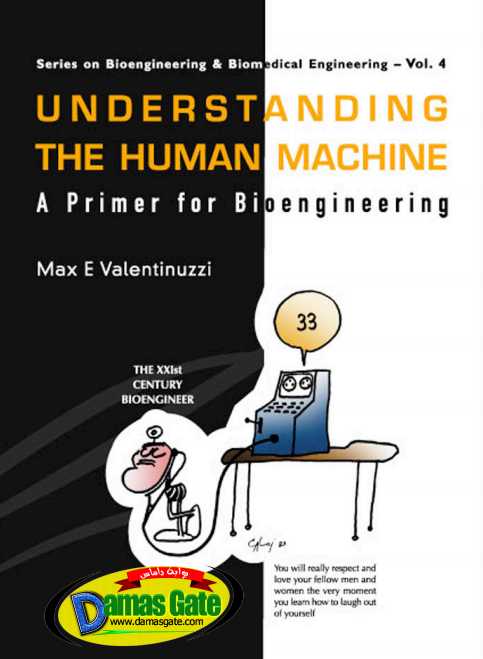Understanding the Human Machine - A Primer for Bioengineering - Max E. Valentinuzzi

Preface
This book is the result of over 35 years of teaching bioengineering and physiology at the undergraduate and graduate levels, in this country and abroad, in engineering and in medical schools, from the perspective of a simple teaching assistant under the supervision of great teachers like Hebbel E. Hoff and Leslie A. Geddes, at Baylor College of Medicine, in Houston, Texas, USA, to the level of full professorship and directorship of a graduate program, of collecting notes and material of different kinds, of actual research and technological development activities, of close interaction with students and collaborators alike, of joyful
and sometimes painful work.
The basic idea for the eight proposed chapters is that of an introduction intended for undergraduate students; thus, they need an overview, to grasp concepts. The big question to answer is: What is bioengineering all about?
Sometimes, the subject will be treated in relative depth; sometimes the visit will be more superficial. I would like to stay away of encyclopedism, that is, trying to favor formation
rather than mere information. Whenever possible, historical data would supply
background material and spicy insights. Style should be light, sprinkled with a little humor.
Smaller case will be used for the less important. Skip it, if you wish. However, the
core content will be preserved to avoid transforming a technical book into an easy-going novel.
There will be exercises to make the students think and search. He and she are supposed to work out the material, the suggested readings, the problems, they are supposed to search and dig. The student needs to learn how to learn by himself or herself, for in real life that is what counts. However, this sweating and hard process must always be an enjoyable one. If you cannot find the element of fun, then you are out of business. The book, if successful, should motivate even more the student in his/her endeavor to proceed further in the fascinating bioengineering/biomedical engineering enterprise. It should answer some
questions and leave open many others; it should show new avenues to continue.
Download
http://s18.alxa.net/s18/srvs2/02/003...lentinuzzi.rar

Preface
This book is the result of over 35 years of teaching bioengineering and physiology at the undergraduate and graduate levels, in this country and abroad, in engineering and in medical schools, from the perspective of a simple teaching assistant under the supervision of great teachers like Hebbel E. Hoff and Leslie A. Geddes, at Baylor College of Medicine, in Houston, Texas, USA, to the level of full professorship and directorship of a graduate program, of collecting notes and material of different kinds, of actual research and technological development activities, of close interaction with students and collaborators alike, of joyful
and sometimes painful work.
The basic idea for the eight proposed chapters is that of an introduction intended for undergraduate students; thus, they need an overview, to grasp concepts. The big question to answer is: What is bioengineering all about?
Sometimes, the subject will be treated in relative depth; sometimes the visit will be more superficial. I would like to stay away of encyclopedism, that is, trying to favor formation
rather than mere information. Whenever possible, historical data would supply
background material and spicy insights. Style should be light, sprinkled with a little humor.
Smaller case will be used for the less important. Skip it, if you wish. However, the
core content will be preserved to avoid transforming a technical book into an easy-going novel.
There will be exercises to make the students think and search. He and she are supposed to work out the material, the suggested readings, the problems, they are supposed to search and dig. The student needs to learn how to learn by himself or herself, for in real life that is what counts. However, this sweating and hard process must always be an enjoyable one. If you cannot find the element of fun, then you are out of business. The book, if successful, should motivate even more the student in his/her endeavor to proceed further in the fascinating bioengineering/biomedical engineering enterprise. It should answer some
questions and leave open many others; it should show new avenues to continue.
Download
http://s18.alxa.net/s18/srvs2/02/003...lentinuzzi.rar